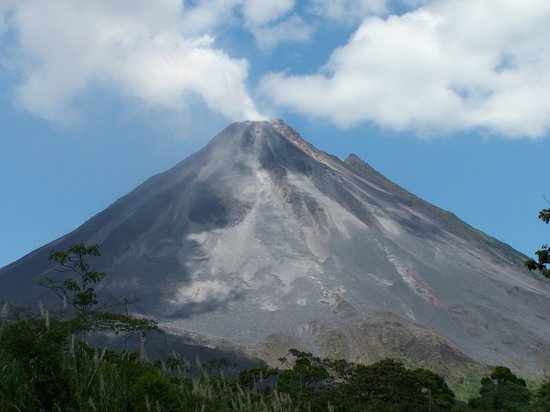An avalanche is a rapid flow of snow down a slope, from either natural triggers or human activity. Typically occurring in mountainous terrain, powerful avalanches have the capability to entrain ice, rocks, trees, and other material on the slope; however avalanches are mainly composed of snow.
Avalanches are always caused by an external stress on the snow pack, they are not random events. Natural triggers of avalanches include heating, rock fall, ice fall, and other sudden
 impacts; however, even a snow pack held at a constant temperature, pressure, and humidity will evolve over time and develop stresses. Human triggers of avalanches include skiers, snowmobiles, and controlled explosive work.
impacts; however, even a snow pack held at a constant temperature, pressure, and humidity will evolve over time and develop stresses. Human triggers of avalanches include skiers, snowmobiles, and controlled explosive work.Even small avalanches are a serious danger to life, even with properly trained and equipped companions who avoid the avalanche. Between 55 and 65 percent of victims buried in the open are killed, and only 80 percent of the victims remaining on the surface survive.
Myth: Avalanches can be triggered by shouting - Avalanches cannot be triggered by sound as the forces exerted by the pressures in sound waves are far too low. The very large shockwaves produced by explosions can trigger avalanches, however, if they are close enough to the surface.
Earthquakes
An Earthquake is a sudden shake of the Earth's crust.The vibrations may vary in magnitude. Earthquakes are mainly sudden releases of energy caused by but also by volcanic activity, landslides, mine blasts, and nuclear experiments. An earthquakes power is measured on the Richter scale, with 1 being a small tremor and 10 causing serious damage.
Below is a list of Richter scale levels, their damage levels and frequency.
 Less than 2: Not felt, about 8000 happen every day
Less than 2: Not felt, about 8000 happen every day- 2-2.9: Not felt, but recorded, about 1000 happen every day
- 3-3.9: Often felt, but rarely cause damage, about 49,000 happen per year
- 4-4.9: Noticble shaking, but damage unlikly, about 6,200 per year
- 5-5.9: Can cause major damage to poor construtions, about 800 per year
- 6-6.9: Can be destructive in populated areas, about 120 per year
7-7.9: Can cause serious damage over larger areas, about 18 per year
- 8-8.9: Can cause serious damage in areas of several hundred miles, about 1 per year
- 9-9.9: Devastating, about 1 per 20 years
- 10+: Never recording, extremely rare
There are three main types of fault that may cause an earthquake: normal, reverse (thrust) and strike-slip. Normal and reverse are examples of displacement, where plates in the earths crust dip. Strike-slip is where the two plates slip (hence the name) past each other.
Volcanic eruptions
A volcano is an opening, or rupture, in a planet's surface or crust, which allows hot, molten rock, ash, and gases to escape from below the surface.
Volcanos that regularly erupt are classed as "Active". There is no real critera on how to define an "active" volcano. Scientists usually consider a volcano to be active if it is currently erupting or showing signs of unrest, such as unusual earthquake activity or significant new gas emissions. Many scientists also consider a volcano active if it has erupted in historic time. A "Dormant" volcano is a volcano that has erupted in previous times, but have not erupted
 for a while. Extinct volcanos are volcanos that are deemed never to erupt again because they contain no more lava.
for a while. Extinct volcanos are volcanos that are deemed never to erupt again because they contain no more lava.It is difficult to distinguish an extinct volcano from a dormant one. Volcanoes are often considered to be extinct if there are no written records of its activity. Nevertheless volcanoes may remain dormant for a long period of time, and it is not uncommon for a so-called "extinct" volcano to erupt again. Vesuvius was thought to be extinct before its famous eruption of AD 79, which destroyed the town of Pompeii.
No comments:
Post a Comment